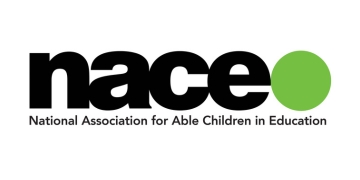As teachers we may have hunches about why pupils learn certain elements particularly effectively, but often it’s difficult to narrow down the cause. So how do we find what has worked well?
Understanding cognitive load theory (CLT) helps to decipher exactly that. CLT is all about how humans process information from the limited working memory to the limitless long-term memory. Sweller et al (1998, 2011) and Kester and Van Merriënboer (2014) link the research to instruction design and how teachers can turn understanding CLT into better attainment for their classes.
It is best understood through three categories: intrinsic load, extraneous load, and germane load. Intrinsic load is the effort associated with a topic. It is difficult to entirely eliminate this type of cognitive load as a more complex topic will need relatively more mental effort; for example, it’s much easier to add 2+2 than solve a quadratic equation. Germane cognitive load is the work put into transferring learning to the long-term memory.
The only one that teachers have influence over in the classroom is extraneous load as this boils down to how accessible information is, based on how it’s presented. Simple steps such as avoiding cluttered resources can help. Higher impact ways, however, can significantly boost attainment through tweaking resources in the classroom.
Goal-free questioning
Changing the way pupils approach a question by removing specific goals has been shown to help them reach the same point in their learning, but with less effort. Consider the goal-specific question, “A car is uniformly accelerated from rest for 1 minute. Its final velocity is 2 km/min. How far has it travelled?” compared with the same problem with the final statement changed to a goal-free question, “Calculate the value of as many variables as you can”.
In both cases, the questions require several formulas concerning velocity, time and distance. The first question requires heavy cognitive load as the formulas are tackled simultaneously, requiring the pupil to process lots of information at once. With the second goal-free question, the learner can access any equation associated with the problem, note it down and repeat. Only tackling one equation at a time provides a much lower demand on working memory, but provides the same outcome – and makes the work more accessible.
Worked examples & completion problems
To reduce extraneous cognitive load, ask a pupil to analyse a marked model question that fully demonstrates the process, whether that’s entirely correct or with misconceptions, depending on the exercise’s purpose. It can even boost attainment more than solving similar problems, as pupils can spot strengths and process what they would improve.
Sometimes it is necessary to supplement such an exercise with conventional questions, but if they’re insufficiently planned they might negate some of the value of analysing the worked example. To avoid this, consider using completion problems; take a worked answer, but remove a section or step that would be valuable for learners to focus their attention on. This still prompts analytical thought, building understanding without overburdening working memory.
Split-attention effect
A small change to the way explanations are presented could have a big impact on how a learner processes the information into their long-term memory. For example, if an explanatory diagram is presented with the elements listed by the side, then the learner must integrate the information, mapping one on to the other, causing heavy extraneous cognitive load. However, combining the two in the first instance by labelling the diagram reduces the cognitive load, because the information is presented as a whole.
This is not dissimilar to the coherence principle: that there is better transfer to long-term memory when distractors such as background music are absent (Rey, 2012).
Applying CLT in this way has the potential to get the most out of learners without overburdening them. When small changes to practice are so easy to make, why not make the tweaks and see the impact on your pupils’ attainment?
References:
Centre for Education, Statistics and Evaluation (2018) Cognitive Load Theory in Practice: Examples for the classroom. Available at: https://www.cese.nsw.gov.au//images/stories/PDF/Cognitive_load_theory_practice_guide_AA.pdf
Rey, G. D. (2012). A review of research and a meta-analysis of the seductive details effect. Educational Research Review, 7, 216-237. Available at: https://www.sciencedirect.com/science/article/pii/S1747938X12000413?via%3Dihub
Sweller, J., Van Merriënboer, J. J. G., & Paas, F. (1998). Cognitive architecture and instructional design. Educational Psychology Review, 10, 251-296. Available at: https://www.researchgate.net/publication/200772805_Cognitive_Architecture_and_Instructional_Design
Sweller, J., Ayres, P., & Kalyuga, S. (2011). Cognitive load theory. New York: Springer.
Van Merriënboer, J., & Kester, L. (2014). The Four-Component Instructional Design Model: Multimedia Principles in Environments for Complex Learning. In R. Mayer (Ed.), The Cambridge Handbook of Multimedia Learning (Cambridge Handbooks in Psychology, pp. 104-148). Cambridge: Cambridge University Press. doi:10.1017/CBO9781139547369.007 Available at: http://www.ciencias.ucr.ac.cr/sites/default/files/Merrinboer-four_component_instructional_design.pdf








Oh irony of ironies! this article introduces so many unfamiliar concepts and terms that non-specialists will find their working memories overwhelmed. For a far better understanding of cognitive load and its implications for the classroom, see https://www.aft.org/sites/default/files/periodicals/Rosenshine.pdf